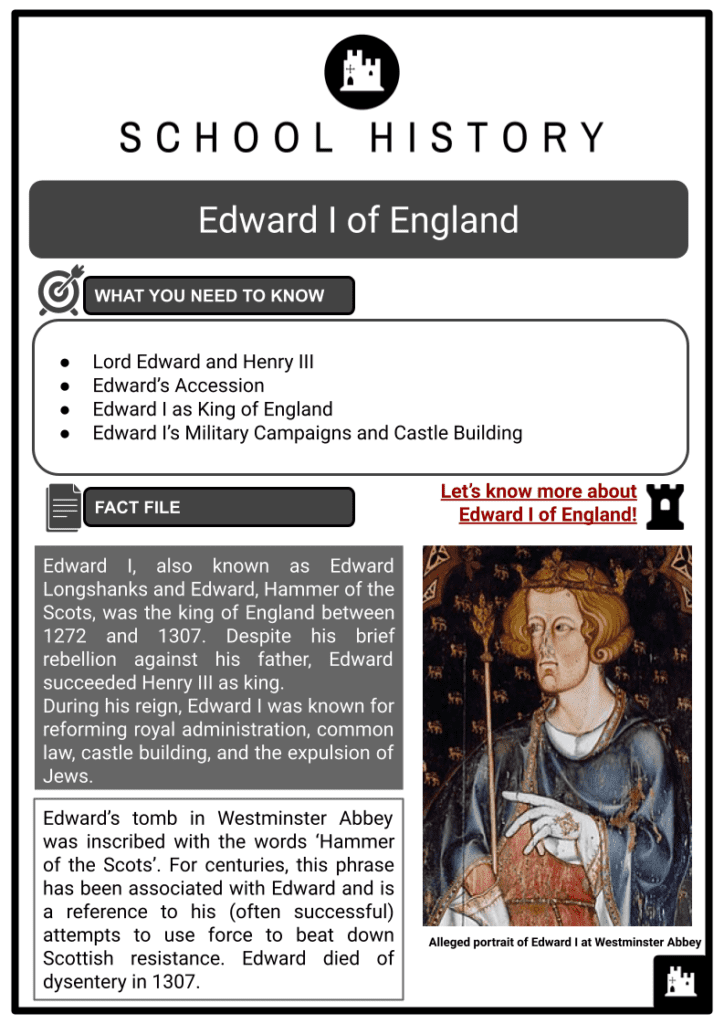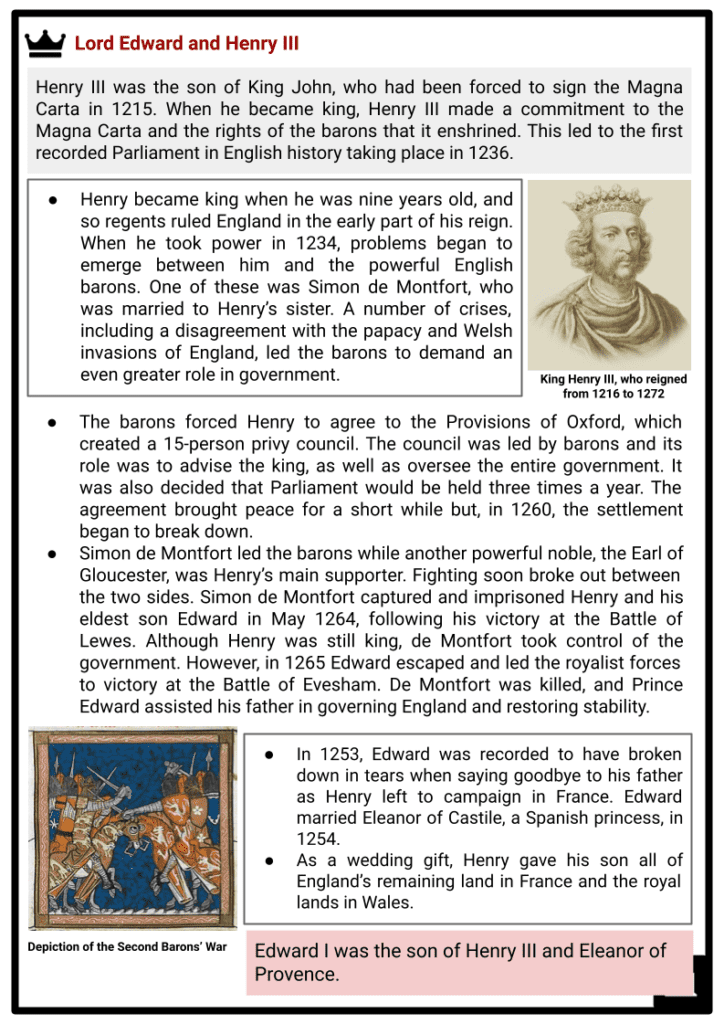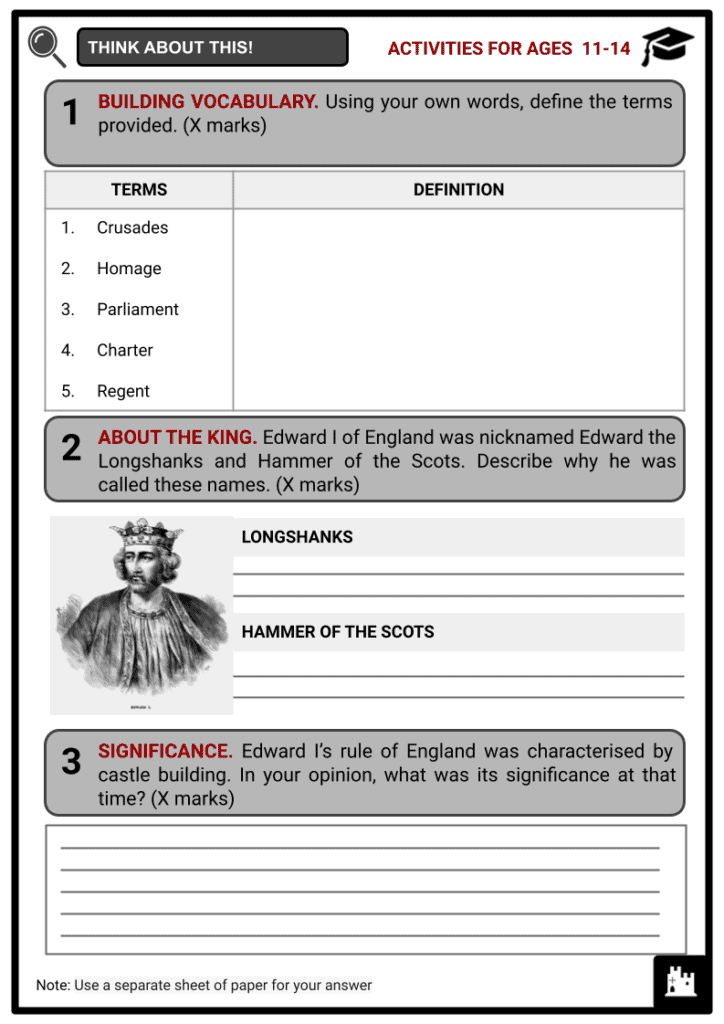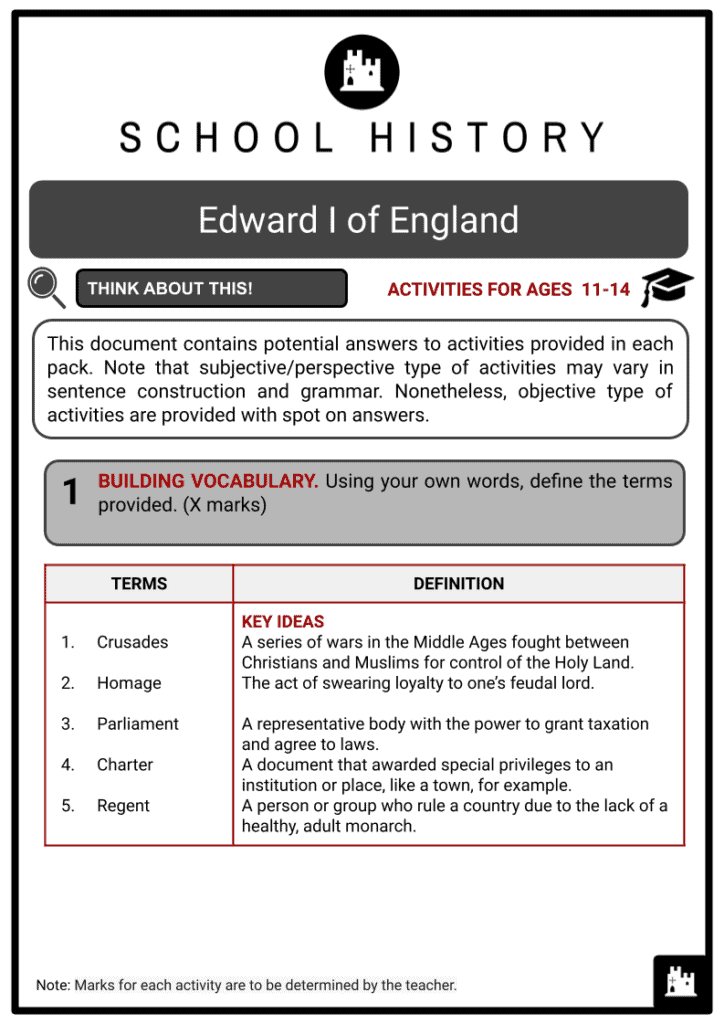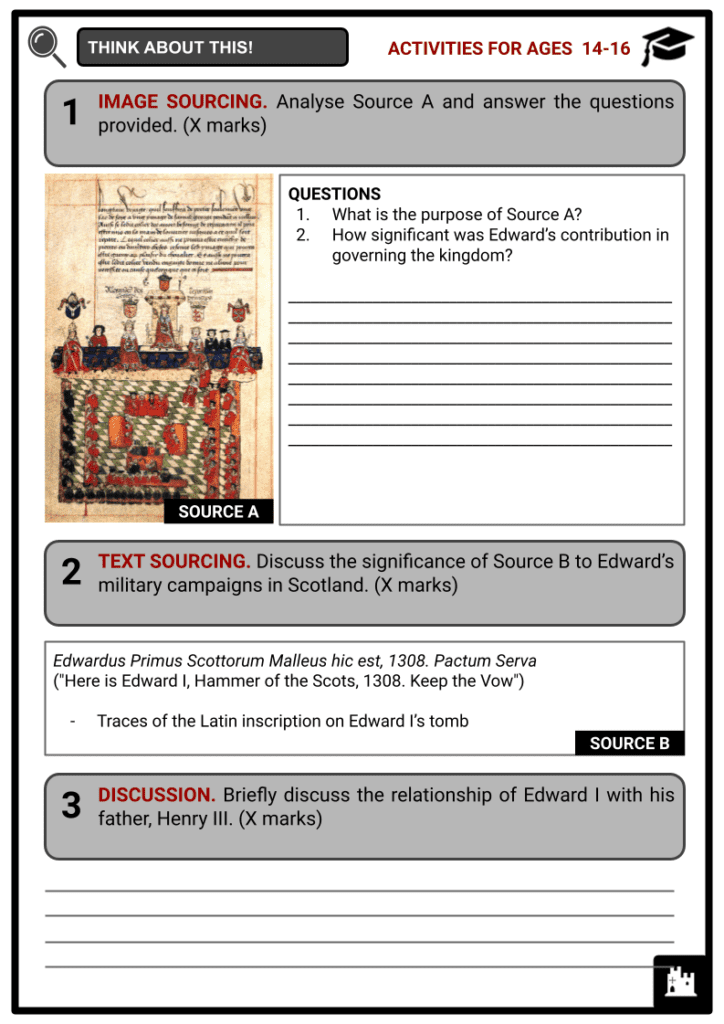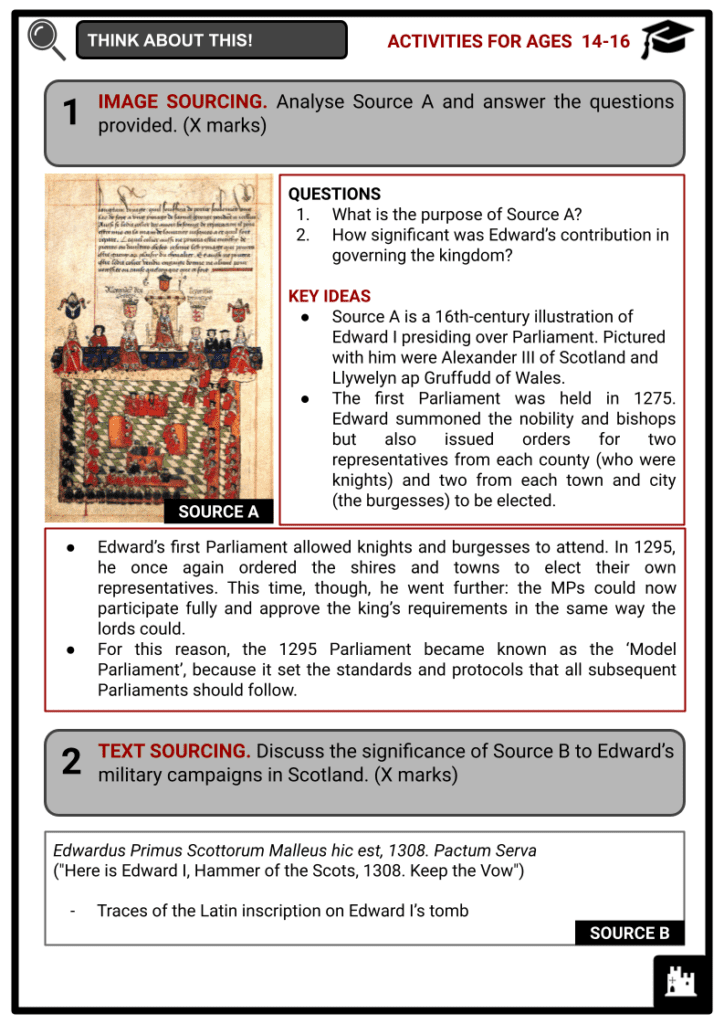Download Edward I of England Worksheets
Do you want to save dozens of hours in time? Get your evenings and weekends back? Be able to teach about Edward I of England to your students?
Our worksheet bundle includes a fact file and printable worksheets and student activities. Perfect for both the classroom and homeschooling!
Summary
- Lord Edward and Henry III
- Edward’s Accession
- Edward I as King of England
- Edward I’s Military Campaigns and Castle Building
Key Facts And Information
Let’s find out more about Edward I of England!
Edward I, also known as Edward Longshanks and Edward, Hammer of the Scots, was the king of England between 1272 and 1307. Despite his brief rebellion against his father, Edward succeeded Henry III as king.
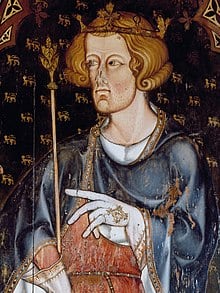
During his reign, Edward I was known for reforming royal administration, common law, castle building, and the expulsion of Jews.
Edward’s tomb in Westminster Abbey was inscribed with the words "Hammer of the Scots." For centuries, this phrase has been associated with Edward and is a reference to his (often successful) attempts to use force to beat down Scottish resistance. Edward died of dysentery in 1307.
Lord Edward and Henry III
- Henry III was the son of King John, who had been forced to sign the Magna Carta in 1215. When he became king, Henry III made a commitment to the Magna Carta and the rights of the barons that it enshrined. This led to the first recorded Parliament in English history taking place in 1236.
- Henry became king when he was nine years old, and so regents ruled England in the early part of his reign. When he took power in 1234, problems began to emerge between him and the powerful English barons. One of these was Simon de Montfort, who was married to Henry’s sister. A number of crises, including a disagreement with the papacy and Welsh invasions of England, led the barons to demand an even greater role in government.
- The barons forced Henry to agree to the Provisions of Oxford, which created a 15-person privy council. The council was led by barons and its role was to advise the king, as well as oversee the entire government. It was also decided that Parliament would be held three times a year. The agreement brought peace for a short while but, in 1260, the settlement began to break down.
- Simon de Montfort led the barons while another powerful noble, the Earl of Gloucester, was Henry’s main supporter. Fighting soon broke out between the two sides. Simon de Montfort captured and imprisoned Henry and his eldest son Edward in May 1264, following his victory at the Battle of Lewes. Although Henry was still king, de Montfort took control of the government. However, in 1265 Edward escaped and led the royalist forces to victory at the Battle of Evesham. De Montfort was killed, and Prince Edward assisted his father in governing England and restoring stability.
- In 1253, Edward was recorded to have broken down in tears when saying goodbye to his father as Henry left to campaign in France. Edward married Eleanor of Castile, a Spanish princess, in 1254.
- As a wedding gift, Henry gave his son all of England’s remaining land in France and the royal lands in Wales.
- Edward I was the son of Henry III and Eleanor of Provence.
- In the following years, Edward played a significant role in the running of the country as he sought to end the years of chaos and bring back a stable government.
- By 1268, Edward felt confident enough that this had been achieved that he could go on Crusade. As he prepared to return to England, he was informed that both his father and son had died.
Edward’s Accession
- Wales had also been a problematic region during the reign of Henry III. Welsh lords, such as Llywelyn ap Gruffudd, had taken advantage of the civil war in England to extend their power and influence.
- Llywelyn was summoned to London in 1274 to pay homage to Edward at the time of his coronation. This was an obligation of Llywelyn’s because Edward was his feudal overlord.
- However, Llywelyn ignored five summons. He also attempted to marry the daughter of Simon de Montfort to increase his power and influence further among de Montfort’s former supporters. Edward hired pirates to seize the ship on which Eleanor de Montfort was travelling, and she was imprisoned in Windsor Castle.
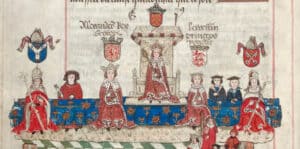
A manuscript (date unknown) showing Edward I in the centre and Llywelyn, Prince of Wales, to his left - In 1276, Edward declared that Llywelyn had rebelled against his feudal lord. He gathered a substantial army and invaded Wales, intending to remove Llywelyn and increase his control over the principality.
Edward I as King of England
- As well as ensuring that his nobles swore loyalty to him, Edward also set out to reinforce the idea that all of the nobility’s holdings and authority stemmed from the Crown. Through the Statute of Gloucester (1278), Edward stated that the nobility would need to demonstrate on what grounds they held the right to govern their estates or risk losing their right to do so.
- In 1294, Edward began to prepare for war with France. He summoned Parliament to meet in Salisbury in 1297 and demanded military service from his earls.
- One of them was Roger Bigod, the Earl of Norfolk, and he refused to comply. The Earl of Hereford agreed with Bigod and they were joined by two other earls, Arundel and Warwick.
- One of the main reasons for the earls’ unwillingness to cooperate with Edward was the high burden of taxation.
- One of Edward’s priorities on becoming king was to conduct an inquiry into his rights over land and its ownership of it. This was necessary because during the upheaval of Henry III’s reign, many lords had taken advantage of the lack of efficient government to extend their rights.
- Commissioners were appointed to travel around the counties of England recording details of each manor, such as the amount of villeins, their names and obligations and the size of their landholdings.
- It had a much greater level of detail than the Domesday Book of the 11th century, which had been a similar survey of the land. Each county or shire was divided into ‘hundreds’ and so the returned information was known as the ‘Hundred Rolls’.
- There were three Statutes of Westminster during the reign of Edward I: in 1275, 1285 and 1290. Each was passed at Parliament and each enacted important amendments to the law or clarified it – especially where property rights and landholding were concerned.
- The Statutes of Mortmain (which means ‘dead hand’) were passed in 1279 and 1290. It was the practice of many people at this time to leave the land to the Church in their will. This was bad for the Crown because the king earned money from taxing land every time land was inherited; its owner became an adult; or was tainted by treason.
- Quo Warranto translates to ‘By what warrant?’ In the early years of Edward’s rule, he sought to challenge his subjects who claimed an office or right had been granted to them without being able to support their claim.
- The Quo Warranto inquiries allowed Edward to reassert his authority over the barons and lords; many of them could not prove they had been granted a right (such as the right to hold a court and collect the profits) by the king, and so Edward could threaten to reclaim it.
- Edward held 46 Parliaments during his 35-year reign. The first Parliament was held in 1275. Edward summoned the nobility and bishops but also issued orders for two representatives from each county (who were knights) and two from each town and city (the burgesses) to be elected.
- Edward’s first Parliament allowed knights and burgesses to attend. In 1295, he once again ordered the shires and towns to elect their own representatives. This time, though, he went further: MPs could now participate fully and approve the king’s requirements in the same way the lords could. For this reason, the 1295 Parliament became known as the ‘Model Parliament’, because it set the standards and protocols that all subsequent Parliaments should follow.
- Edward I himself is reported to have said: “what touches all should be approved by all”.
- For Edward to fulfil his ambitions of conquest, he needed money. The foundations of prosperity came from the wool trade, which allowed merchants to make huge profits, towns to grow, and the king to increase his wealth.
- Some of the major towns of Edward’s reign had a long history, having grown on the sites of Roman settlements. These included London, Winchester, York and Canterbury.
- Edward’s conflicts in Wales and Scotland required large amounts of money to flow into the Crown’s coffers. The wool trade provided Edward with a valuable source of income. In 1275, he negotiated a treaty with wool merchants, placing a duty on their exports that provided him with an average annual income of £10,000. The duty was set at 6s 8d per sack of wool.
- Edward attempted to squeeze more money out of the wool trade and, in 1294, he forcibly seized all the wool in the realm and would only release it if a duty of 40 shillings per sack was paid. Edward also issued a prise (forcible seizure for the Crown) on wool in 1297 and took 2,333 sacks.
- Merchants were business people who made their money from trade. They grew in importance during the reign of Edward as trade and towns increased in significance. Some merchants bought local produce and sold it at a profit, while others imported and exported goods to the continent or beyond.
- To finance his conquests, a further source of income for Edward were loans. In medieval Europe, Christians were forbidden from lending money because usury (charging interest) was considered a sin.
- Therefore, many of the prominent money lenders in 13th-century England were Jews. Edward borrowed large sums of money from the Jews as well as Italian banking houses, particularly the Riccardi Bank of Italy.
- In the first four years of Edward’s reign, the London mint produced more than 30 tonnes of silver coins. Many of these coins had been ‘clipped’, however, meaning that some of the precious metal was shaved off. This lowered their value enormously at a time when the amount of silver or gold in a coin was what gave it its value.
- Edward, therefore, began a process of recoinage. The royal mints at London, Bristol, Canterbury and York were set to work redesigning and producing a new series of coins in the denominations of halfpennies, pennies, farthings and groats. There was another recoinage in 1290.
- Jews had faced decades of prejudice and discrimination in England by the time Edward became king in 1272.
- They had been forced to wear a badge to distinguish them from the rest of the population, were heavily taxed and were forcibly segregated. As Jews were also banned from many professions, many earned a living and grew their wealth through lending money with interest.
- In 1275, the Statute of Jewry outlawed all lending for interest and gave Jews 15 years to adopt new practices.
- In 1276, Jews were heavily taxed to raise money for Edward’s wars in Wales. When many could not pay, they were arrested. Around 300 Jews were executed.
- In 1278, All Jews in England (around 3,000 people) were accused of coin clipping. 680 were detained in the Tower of London and around 300 were executed.
- In 1287, Edward expelled all Jews from the Duchy of Gascony, seizing their property and transferring debts owed to them to the king.
- In 1290, the Edict of Expulsion was enforced which expelled all Jews from England.
Edward I’s Military Campaigns and Castle Building
-
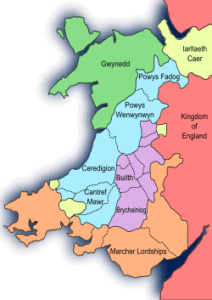
Map showing Wales at the time of Edward I’s control When Edward became king in 1272, he faced hostility from Llywelyn, Prince of Wales. Llywelyn refused to recognise Edward as his feudal lord, leading to Edward invading Wales in 1277.
- A further invasion followed in 1282. This time, Edward was determined to conquer Wales once and for all. The military campaigns of his reign would have huge consequences, leading to a growth in the power of the king, the increased significance of Parliament, and, in the long term, the eventual formation of the United Kingdom.
- Edward had completely conquered Wales and was able to take all the Welsh territory. Control of some of this was given directly to Edward’s supporters, including some of the powerful nobles who had assisted him in his military campaign.
- These included Mortimer, Bohun and Clare. The majority of the rest of Wales remained as the principality. However, the principality was now directly controlled by Edward. In 1301, he bestowed this land and the title of Prince of Wales on his son (the future Edward II), thereby establishing a tradition, which continues to this day.
- After both the 1277 and 1282-3 wars, Edward undertook a programme of castle building in order to strengthen his authority and make future rebellions more difficult.
- The official given the responsibility for the construction of these fortresses was James St George. Under his supervision, a ‘ring of iron’ was created, encircling Wales with stone castles. Some of these castles included Caernarfon, Harlech and Beaumaris.
- As castles were built, new towns were also created to support and supply the construction efforts, including Aberystwyth, Flint and Rhuddlan.
- Aside from installing English rulers, castle building also meant ‘anglicising’ the population of Wales by encouraging loyal English subjects to move there, forcing the English language and customs on the Welsh and creating valuable and lucrative trade and commercial links so that Wales was economically dependent on England.
- When Edward became king in 1272, Scotland was a completely separate country and political entity to England. It had its own monarch, laws and customs. He had long wished to have England recognised as Scotland’s feudal overlord and seized his chance to intervene when the succession to the throne of Scotland was disputed in 1290.
- The Great Cause was the question of who should rule Scotland arose in 1290 due to there being no clear choice of monarch. King Alexander III of Scotland had died in 1286 and his only living descendant was his granddaughter Margaret, a three-year-old known as the ‘Maid of Norway’. Margaret’s young age meant that Scotland was ruled by a regency council known as the ‘Guardians of Scotland’.
- Edward and the Guardians had agreed to a marriage contract for the union of Margaret and Edward’s son, also called Edward. The marriage treaty stated that their children would inherit the crowns of both Scotland and England, the two kingdoms would remain politically separate and Scotland would not be absorbed into England.
- However, Margaret died en route to Scotland in 1290. There was no other candidate in King Alexander III’s direct line of succession. After Margaret’s death, the Guardians of Scotland asked Edward to preside over a court in order to decide which of the claimants to the Scottish throne should be made king. This process is known as the ‘Great Cause’.
- Edward demanded that his claim to be recognised as Scotland’s feudal overlord be established before he would become involved. In June 1291 Edward was recognised as ‘Chief Lord and Guardian of Scotland’.
- Edward was also given control of some Scottish castles and so agreed to establish a court to rule on the question of Scottish succession.
- Edward invaded Scotland in March 1296, beginning his campaign by successfully laying siege to the town of Berwick, which was just over the border.
- By the summer, Edward was in control of a large part of Scotland. Edward ordered a Parliament at Berwick, where he was recognised as the feudal overlord of Scotland and homage was paid to him.
- In 1297, rebellions against Edward’s rule began. Two of the key figures in these rebellions were William Wallace and Andrew Moray.

